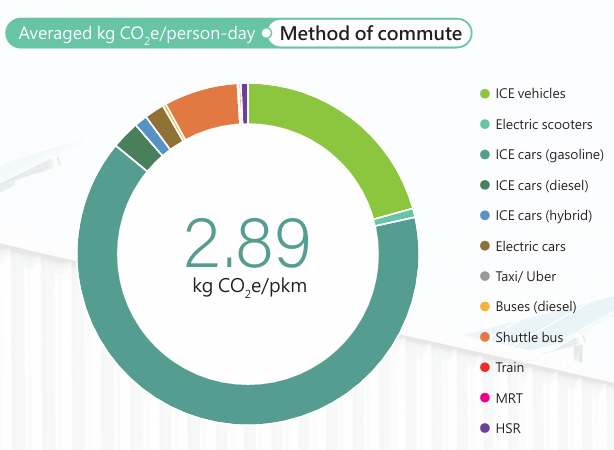5.2.1 Climate Risk Management
In response to increasingly severe cases of extreme weather, it is crucial for companies to build up the resilience to respond to climate disasters in their business operations. VisEra established an Enterprise Risk Management (ERM) system with reference to the ISO 22301 Business Continuity Management standards. We evaluated the frequency of risk events and the severity of their impact on the Company's operations with a Risk Map, defined the priority and risk level for risk management, and adopted corresponding risk management strategies based on the risk rating. The assessment results showed that the risks associated with climate change include drought, strong typhoons, heavy rainfall, earthquakes, power and water shortages, and increasingly stringent regulatory requirements. VisEra conducts training and exercises on mitigation measures through scenario simulation, and regularly reviews risk changes and responses every quarter
Note: Details for Climate-related information implementation, please refer to VisEra 2023 Annual Report, Climate-related information implementation, page 45-50.
Note: Details for Task Force on Climate-related Financial Disclosures, please refer to VisEra’s official website/ ESG Section / Role / Green Production / Climate strategy
Since 2022, VisEra has adopted the framework of the Task Force on Climate-related Financial Disclosures (TCFD) every 2 years to identify climate risks and opportunities and referenced research reports of international institutions to evaluate climate change risks and response measures and identify potential risks and opportunities. We also established inter-departmental units to rank the risks and opportunities identified in the "Climate Change Risk and Opportunity Workshop" with respect to policies, regulations, markets, technologies, business reputation, and physical risks. We established metrics based on the identification results for target management to effectively monitor the progress and results of the actions taken in response to climate change, and thereby reduce the financial impact of climate risk on operations. To address the top three risks of net zero carbon emissions, regulations - carbon tax, and rapid climate change - drought, we considered internal and external environmental changes and conducted a quantitative impact financial assessment with reference to the methodologies disclosed by domestic and foreign companies. We developed strategies and actions for climate change with a focus on the four aspects including "governance", "strategy", "risk management", and "metrics and targets" to reduce the impact of climate risks and increase the climate resilience of the organization.
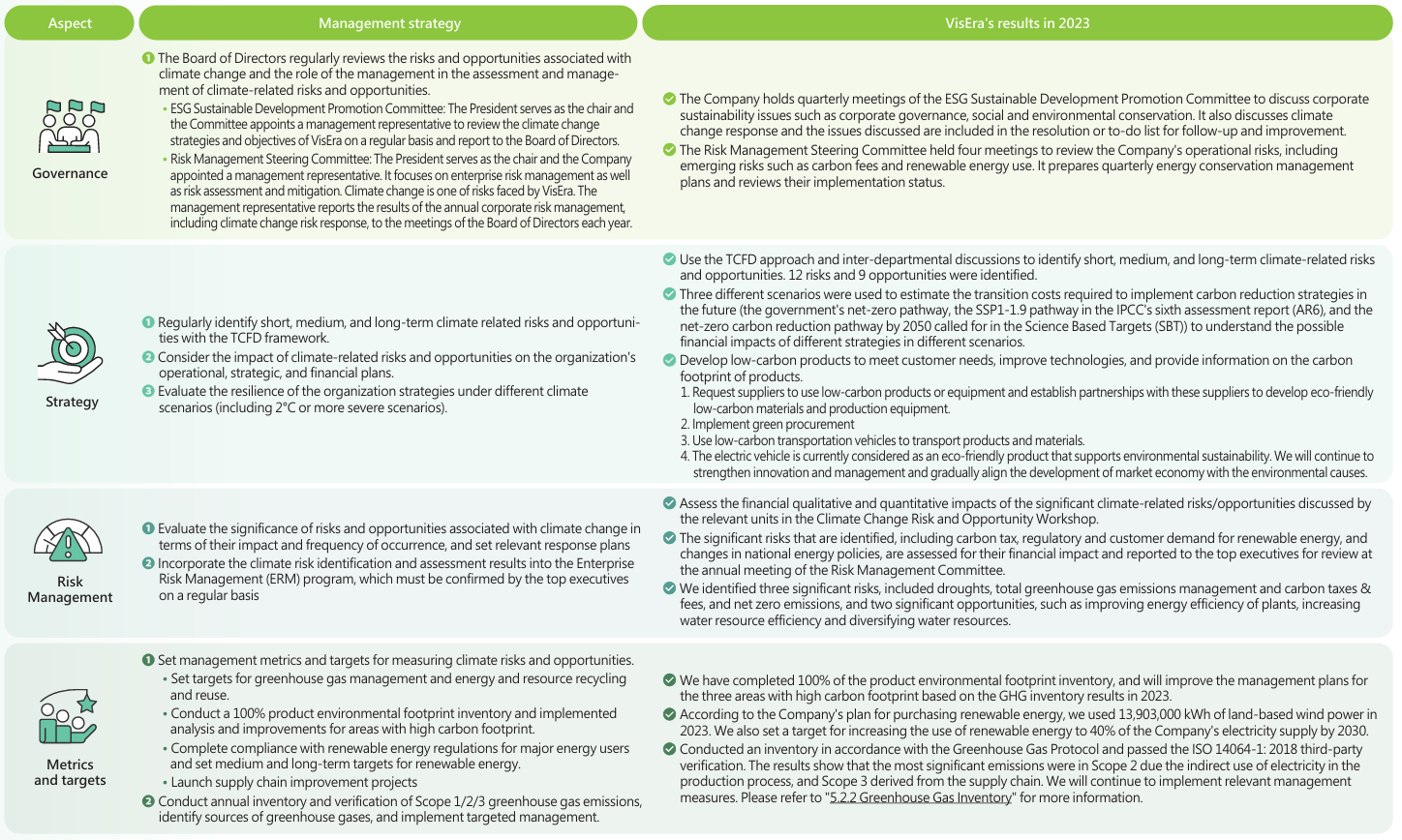
Identification of climate change risks and opportunities
Note: Risks and opportunities, please refer detailed information as VisEra’s official website/ ESG Section / Role / Green Production / Climate strategy
Financial Impact Analysis for Transition Scenarios
As the transition risks of climate change such as changes in regulations and market demand may have a long-term and significant impact on the Company's operations, VisEra has estimated the cost of transition required for the carbon reduction strategy under three different scenarios, including the government's Pathway to Net Zero Emissions, the SSP1-1.9 pathway in the IPCC's Sixth Assessment Report (AR6), and the net-zero carbon reduction pathway by 2050 advocated by the Science-Based Targets (SBT) initiative. We ultimately compared the risks to the BAU strategy (risks due to any inaction by VisEra) to measure the potential financial impacts of different strategies under different scenarios.
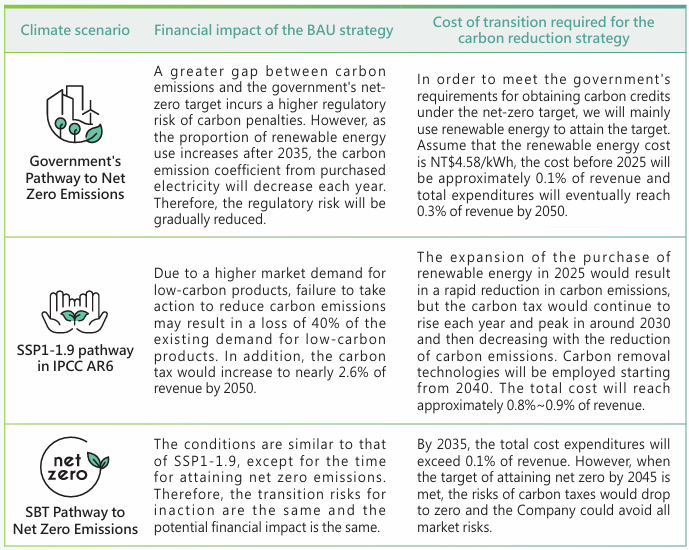
5.2.2 Greenhouse gas inventory
VisEra established a voluntary greenhouse gas inventory system in 2013. We referenced ISO 14064 standards and the WBCSD/WRI Greenhouse Gas Protocol, and regularly inventory greenhouse gas emissions every year to monitor greenhouse gas usage and emissions, verify the effectiveness of reduction actions, and obtain third-party verification.
VisEra regards renewable energy as an important strategy for attaining net zero emissions. In 2022, VisEra used 100% renewable energy. We continued to optimize process greenhouse gas usage and maximize exhaust gas reduction as our benchmark actions. 100% of new and existing plants are equipped with onsite high-performance pollution reduction equipment with local scrubbers (LSC) and existing plants continuously replace inefficient LCS. We have taken concrete actions to effectively reduce direct emissions of Scope 1 greenhouse gases by 12,598 metric ton-CO2e.

Scope 1 & 2: Greenhouse gas emissions
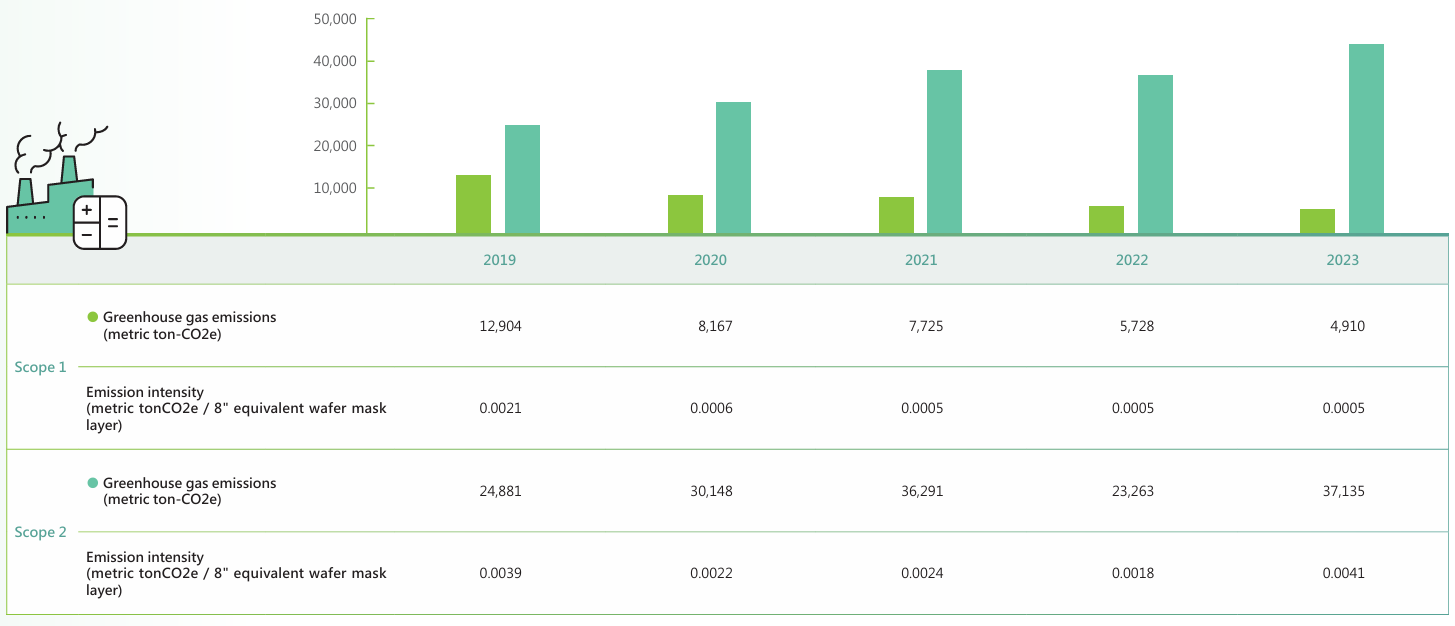
Note 1: In terms of the organizational boundaries, we adopted the 100% operation control methodology, including Hsinchu plant and Longtan plant (joined from 2023), excluding Zhongli plant (emissions account for less than 5% of total emissions.)
Note 2: The GWP value will be based on the IPCC 4th Assessment Report before 2022, and the IPCC 5th Assessment Report onwards from 2023. Greenhouse gas emissions are based on the Greenhouse Gas Emission Factor Management Table Version 6.0.4 of the Environmental Protection Administration.
Note 3: Since 2020, the local scrubber (LSC) has been introduced to effectively reduce fluorine gas emissions in the process.
Note 4: Scope 2 greenhouse gas emissions were calculated based on the electricity carbon emission coefficient announced by the Bureau of Energy, Ministry of Economic Affairs.
Note 5: The intensity of Scope 2 emissions decreased in 2022 due to the implementation of several energy conservation measures in the plants and the increase in the use of renewable energy (detailed in the Energy Management chapter).
To strengthen the integrity of the GHG inventory in the value chain, VisEra has included the quantification of Scope 3 emissions and obtained external verification starting from 2020. VisEra referenced the 15 types of Scope 3 emissions defined in the WBCSD/WRI Greenhouse Gas Protocol Scope 3 Calculation Guidance and estimated the categories of significant indirect emissions, taking into account factors such as ease of obtaining activity data, accuracy of emission coefficients, time required for data collection, and compliance obligations. Emissions from employee commutes have been included in the inventory since 2022. The results show that the areas with significant Scope 3 greenhouse gas emissions were raw material production and energy-related activities. We will actively work with suppliers to implement effective action plans and create a sustainable supply chain.
Scope 3: Greenhouse gas emissions
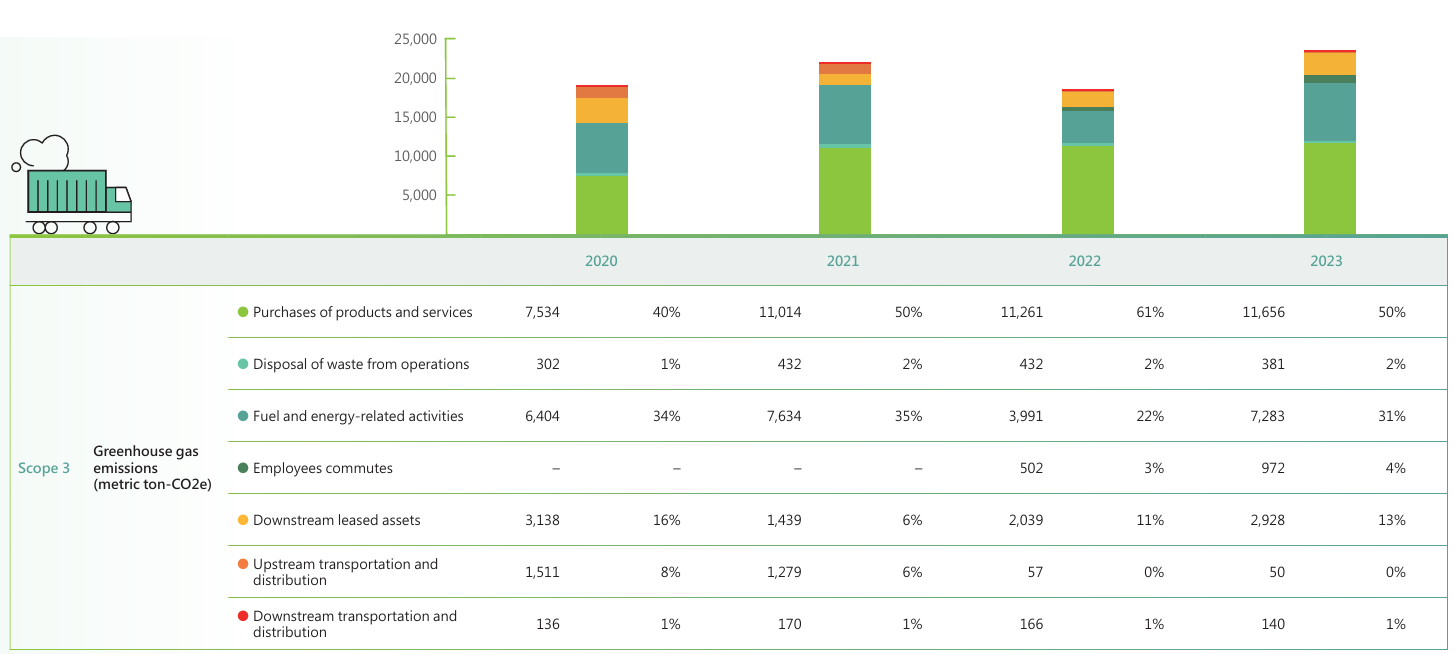
Note 1: Waste from operations include solid and liquid waste.
Note2: Scope 3 includes the Longtan plant from 2023.
Note 3: The GWP value of Scope 3 will adopt the IPCC 4th Assessment Report before 2022, and the IPCC 6th Assessment Report from 2023.
Spotlight
Analysis of carbon emissions from employees' commutes
As the impact of global warming on human life intensifies, the net-zero transformation becomes more than merely a matter of a company's competitiveness in the international market, and it comes a key element for the sustainable development of the company. VisEra has over 1,400 employees. To obtain information on the greenhouse gas emissions associated with employee commutes, we conducted a survey of employees' commute patterns in 2022 with methods provided in the "GHG Protocol Releases Scope 3 Calculation Guidance" created by the World Business Council for Sustainable Development (WBCSD). The results are used as references for the Company's subsequent efforts to promote low-carbon commutes. The results show that the greenhouse gas emissions from commutes of VisEra employees averaged 2.89 kg CO 2e/person-day and the main contribution was from cars and motorcycles powered by fossil fuels. According to Noussan et al. (2022), electric vehicles and mass transit vehicles generate only 15-59% of the greenhouse gas emissions of such vehicles and motorcycles powered by gasoline and diesel. VisEra will encourage employees to use low-carbon transportation, but also evaluate the increase of parking points and coverage of transportation vehicles to build a more complete low-carbon connection network and reduce the environmental impact of employees' commuting process.
